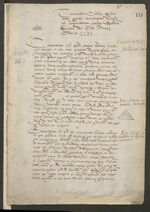Fallish Imperial Declaration
This article is incomplete because it is pending further input from participants, or it is a work-in-progress by one author. Please comment on this article's talk page to share your input, comments and questions. Note: To contribute to this article, you may need to seek help from the author(s) of this page. |
| Fallish Imperial Declaration | |
|---|---|
 | |
| Created | 13 May 1504 |
| Location | Sydenham, Falland |
| Author(s) | Donald Clarke, Henry Lewis, Thomas Lawrence |
| Signatories | King Richard II of Falland |
| Purpose | Establish the Fallish Empire and relationship with colonies |
The Fallish Imperial Declaration, also known as the Fallish Imperial Royal Charter marked the formal establishment of the Fallish Empire and delineated the relationship between the central authority and its colonies. It was approved by Falland's King Richard II on 13 May 1504 in Sydenham. It outlined the structure and governance of the empire, as well as the rights and responsibilities of both the central government and the colonies. Most notably, the colonies were granted extensive autonomy under the declaration, with the condition that they contribute to the wealth and resources of the crown.
The declaration was drafted by Donald Clarke, lord of Reesthrope, alongside Henry Lewis and Thomas Lawrence, prominent figures in Fallish governance and colonial affairs at the time. It was amended several times throughout its history, most notable in X due to X, and X due to X. The role of the declaration would later be replaced by the Constitution of Falland in 1944.